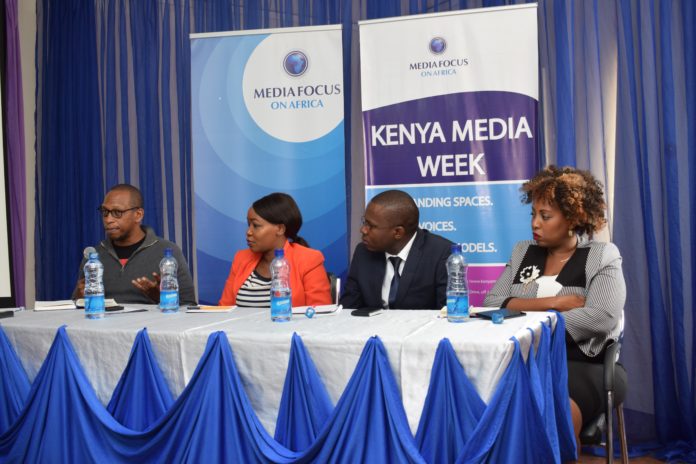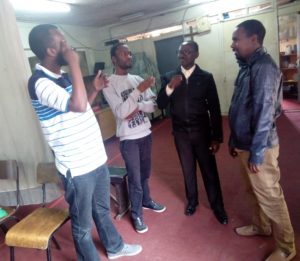
|
Getting your Trinity Audio player ready...
|
By Mercy Odada
Born in 1996 at remote a village in Machakos County, Esther Mwende’s parents realized she could not speak or respond to any form of communication when she was a baby. They sort for medical intervention which did not work.Doctors finally confirmed that she had hearing impairment.
Esther had no choice but to learn to live with her condition. Growing up, Esther depended on her siblings to get information from the rudimentary sign language they had developed when watching television.
This hindered her quest to enjoy the entertainment programs or even getting critical information as she could only see the images.
However, things have changed for Esther .She is alone in her parent’s sitting room watching news on her favorite local channel.
Communicating through writing, she tells me that she likes the fact that she does not depend on her relatives to get updates on current affairs since the introduction of sign language interpreters on local TV channels.
Jane’s problem is not an isolated case as according to Kenya National Bureau of Census (KNBS) 2009 report there are 600,000 people living with hearing impairment in the country. The number could have increased within the last nine years. All these people struggle with accessing information most of which are critical in their development.
In 2006, the UN General Assembly adopted the Convention on Rights of Persons with Disabilities (CRPD) which recommended sign language interpreters to be included in all television newscasts and Kenya ratified this convention in 2008.
While the Kenya Constitution 2010 recognizes sign language as a language for those living with hearing impairment, an indigenous language and one of the languages of Parliament, the use of sign language in the media did not begin in television reporting until 1st July 2016 when Communications Authority of Kenya (CA) implemented broadcast programming code.
All major television stations in Kenya have already complied with the broadcasting code and employed sign interpreters.
Speaking on the issue Director-General, CA, Francis Wangusi stated that the Authority shall, by subsequent Kenya Gazette notices, require licensed broadcasting service providers to comply with additional requirements necessary to make broadcasting services more accessible to PWDs, as may be prescribed from time to time
The broadcasting code requires all media houses to ensure they have 100 percent signing during news and events of national importance as well as all emergency announcements.
 Evangelist Charles Njogu of Emmanuel Church for the deaf, who became deaf at eight years old after a bout with meningitis, said before the directive he watched television, only that he followed through the captions at the bottom of the screen.
Evangelist Charles Njogu of Emmanuel Church for the deaf, who became deaf at eight years old after a bout with meningitis, said before the directive he watched television, only that he followed through the captions at the bottom of the screen.
“The directive by the government is good as the deaf community can now watch TV especially news when most stations have interpreters.” Said Njogu.
However, Evangelist Njogu noted that the interpreter’s space on TV is too small to be seen well.
According to John Makau, a parent with a child with hearing impairment, the TV sign interpreters is a good step towards ensuring those with hearing impairment have maximum access to information through television just like the hearing population.
“I don’t struggle to interpret the news for my daughter anymore and her interest in watching TV during news time has increased,” said Makau
The Sign Language Channel
Banking on the television digital migration, Entrepreneurs like Luke Kizito Muleka who has a history with a sister with hearing impairment , saw an opportunity to improve the situation by starting Sign TV station that specifically targets that section of the population.
“We went on air on February 10, 2017, and the reception has been positive. We have many people followers on social media who have given us encouraging comments” said Luke.
Luke, however, noted their problem has been the finances. The partner’s l had hinged hopes on joined and left without a warning .”
As stated by Luke Kizito, Sign TV is not considered during market research when doing research for media consumption; hence it is difficult to attract advertisers who want to know their market share to advertise with a media house.
However, Njeri Kirieni of Kenya Media Research Foundation noted they considering conducting market research for TV stations that target for special public and this will include Sign TV.
Approximately 193 developed and developing countries like Australia, Algeria, Ghana, South Africa, Rwanda and Tanzania among others have been able to incorporate their sign languages in television broadcasts as a way of ensuring access to information by those living with hearing impairment.













